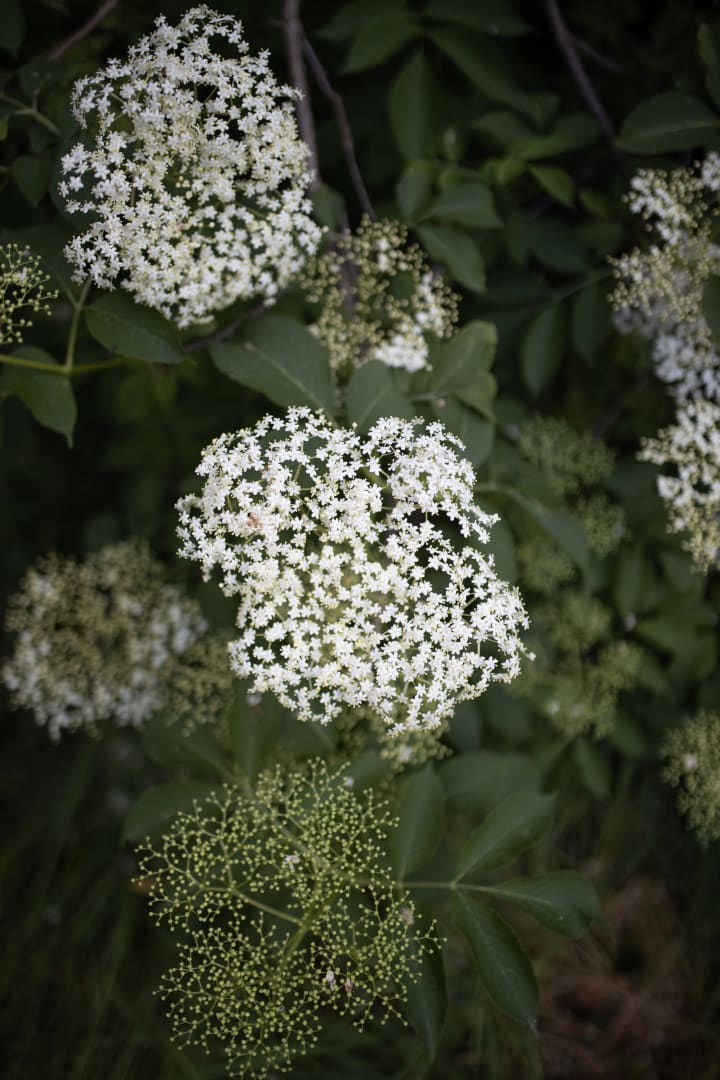A story filled with poisonous things!
(law, nap, hell) "Ye Olde Shoppe".

In my Restaurant, "YE OLDE POISONOUS SHOPPE OF KULINARY DELITEs", all are welcome.
But beware the menu....Eat at your own risk! READ CAREFULLY THE DISCLAIMER ABOVE THE DOOR.
All ye who enter here, may die a horrible death. All foods are racked with poison if prepared contrary to the laws of risk taking.

We Flambe🔥 to reduce the alcohol content of the food, but only modestly.
...................................................
MENU
FUGU PUFFERFISH:
The fugu (河豚; 鰒; フグ) in Japanese, bogeo (복어; -魚) or bok (복) in Korean, and hétún (河豚; 河魨) in Standard Modern Chinese, is a pufferfish, normally of the genus Takifugu, Lagocephalus, or Sphoeroides, or a porcupinefish of the genus Diodon, or a dish prepared from these fish.
Fugu can be lethally poisonous to humans due to its tetrodotoxin, meaning it must be carefully prepared to remove toxic parts and to avoid contaminating the meat.

The restaurant preparation of fugu is strictly controlled by law in Japan, Korea and several other countries, and only chefs who have qualified after three or more years of rigorous training are allowed to prepare the fish. Domestic preparation occasionally leads to accidental death.
Fugu is served as sashimi and nabemono. The liver was served as a traditional dish named fugu-kimo, being widely thought to be a tasty part, but it is also the most poisonous, and serving this organ in restaurants was banned in Japan in 1984. Fugu has become one of the most celebrated dishes in Japanese and Korean cuisine.
Why eat a fish that can kill you, you may ask...Why for the sheer danger of the chase. For living on the edge and staring fate in the face, daring her to drag you to hell.
There are more fish in the sea, so to speak (not to sound corny), but when you fall deeply in love with one fish, it is hard to find another quite the same.
..................................🐟🐟 🐟🐟 🐟🐟...................................
JAMAICAN ACKEE
The Ackee, also known as Ankye, Achee, Akee, Ackee Apple or Ayee (Blighia sapida) is a fruit of the Sapindaceae (soapberry) family, as are the lychee and the longan. It is native to tropical West Africa. The scientific name honours Captain William Bligh who took the fruit from Jamaica to the Royal Botanic Gardens in Kew, England, in 1793. The English common name is derived from the West African Akan Akye Fufo.
Although having a long-held reputation as being poisonous with potential fatalities, the fruit arils are renowned as delicious when ripe, prepared properly and cooked. Ackee is a feature of various Caribbean cuisines. Ackee is the national fruit of Jamaica and is considered a delicacy.
The fruit is pear-shaped and has 3 lobes (2–4 lobes are common).When it ripens it turns from green to a bright red to yellow-orange and splits open to reveal three large, shiny black seeds, each partly surrounded by soft, creamy or spongy, white to yellow flesh — the aril having a nut-like flavor and texture of scrambled eggs. The fruit typically weighs 100–200 grams (3.5–7.1 oz). The tree can produce fruit throughout the year, although January–March and October–November are typically periods of fruit production.
NEVER...I REPEAT...NEVER open the fruit forcefully. It contains poisons. If you open and prepare this fruit, you may take a nap and never wake up. It has to be left alone to open naturally, by itself, ideally in the sunlight, in order to release its toxins.
The unripe aril and the inedible portions of the fruit contain hypoglycin toxins, including hypoglycin A and hypoglycin B, known as "soapberry toxins". Hypoglycin A is found in both the seeds and the arils, while hypoglycin B is found only in the seeds. Minimal quantities of the toxin are found in the ripe arils. In the unripe fruit, depending on the season and exposure to the sun, the concentrations may be up to 10 - 100 times greater.
In 2011, it was found that as the fruit ripens, the seeds act as a sink whereby the hypoglycin A in the arils convert to hypoglycin B in the seeds. In other words, the seeds help in detoxifying the arils, bringing the concentration of hypoglycin A to a level which is generally safe for consumption.

You may purchase a canned variety of this fruit/ackee meat at some local supermarkets or at International stores all over the world. Not to worry, these ackees are made under the safest of conditions. 👻.
...................................................
THE HOODED PITOHUI

The Hooded Pitohui, or Pitohui Dichrous, is a beautiful but poisonous bird. It is the first poisonous bird to be officially documented in the scientific literature. It is about the size of a dove, averaging about nine inches in length, with black feathers on the head and an orange or red belly. They are members of the family Corvidae (as are crows and ravens) and they are passarines or songbirds. They have sharp claws on their black legs, and a strong black beak.
The bright colors of the hooded pitohui, along with a strong odor that it emits are thought to be aposematic or meant to ward off predators. The pitohui inhabits the rainforests and tropical jungles of New Guinea, which is an island located north of Australia. It inhabits the forests from the lower lands to sea level.
NO!....We do not cook those. Just some extra trivia for your viewing pleasure.
....................................................
ELDERBERRY
Toxicity
Sambucus is a genus of flowering plants in the family Adoxaceae. The various species are commonly referred to as elder, elderflower or elderberry.
Although the cooked berries (pulp and skin) of most species of Sambucus are edible, the uncooked berries and other parts of plants from this genus are poisonous. Leaves, twigs, branches, seeds, roots, flowers, and berries of Sambucus plants produce cyanogenic glycosides, which have toxic properties. Ingesting a sufficient quantity of cyanogenic glycosides from berry juice, flower tea, or beverages made from fresh leaves, branches, and fruit has been shown to cause illness, including nausea, vomiting, abdominal cramps, diarrhea, and weakness.
Get your safely prepared elderberry gummies here for healthy chewing.
Elderberry flower.

..........................................
ATROPA BELLADONNA

Atropa belladonna, commonly known as belladonna or deadly nightshade, is a toxic perennial herbaceous plant in the nightshade family Solanaceae, which also includes tomatoes, potatoes and eggplant (aubergine). It is native to Europe, North Africa and Western Asia, including Türkiye. Its distribution extends from Ireland in the west to western Ukraine and the Iranian province of Gilan in the east. It is also naturalized or introduced in some parts of Canada and the United States. (And many other parts of the world).
The foliage and berries are extremely toxic when ingested, containing tropane alkaloids. These toxins include atropine, scopolamine, and hyoscyamine, which cause delirium and hallucinations, and are also used as pharmaceutical anticholinergics.
Atropa belladonna has unpredictable effects. The antidote for belladonna poisoning is physostigmine or pilocarpine, the same as for atropine.
YIKES!
.........................................👻......👻........................................
.👻👻👻👻👻👻👻👻
Onions, garlic, leek and chives
In high doses are toxic to your cats, dogs and some livestock.
Asparagus
Asparagus plants cultivated for food are typically harvested before they reach reproductive maturity. The berries of the mature plant are poisonous, containing furostanol and spirostanol saponins. Rapid ingestion of more than five to seven ripe berries can induce abdominal pain and vomiting. Sulfur compounds in the young shoots are also considered at least partially responsible for mild skin reactions in some people who handle the plant.
Cassava
Roots and leaves contain two cyanogenic glycosides, linamarin and lotaustralin. These are decomposed by linamarase, a naturally occurring enzyme in cassava, liberating hydrogen cyanide. Cassava varieties are often categorized as either sweet or bitter, respectively signifying the absence or presence of toxic levels of cyanogenic glycosides. The 'sweet' cultivars can produce as little as 20 milligrams of cyanide per kilogram of fresh roots, whereas bitter ones may produce more than 50 times as much (1 g/kg).
Cassavas grown during drought are especially high in these toxins. A dose of 40 mg of pure cassava cyanogenic glycoside is sufficient to kill a cow. It can also cause severe calcific pancreatitis in humans, leading to chronic pancreatitis. Processing (soaking, cooking, fermentation, etc.) of cassava root is necessary to remove the toxins and avoid getting sick. In the tropics, cassava farming is a major industry.
"Chronic, low-level cyanide exposure is associated with the development of goiter and with tropical ataxic neuropathy, a nerve-damaging disorder that renders a person unsteady and uncoordinated. Severe cyanide poisoning, particularly during famines, is associated with outbreaks of a debilitating, irreversible paralytic disorder called konzo and, in some cases, death.
For some smaller-rooted sweet varieties, cooking is sufficient to eliminate all toxicity. The cyanide is carried away in the processing water and the amounts produced in domestic consumption are too small to have an environmental impact. The larger-rooted, bitter varieties used for the production of flour or starch must be processed to remove the cyanogenic glycosides.
Industrial production of cassava flour, even at the cottage level, may generate enough cyanide and cyanogenic glycosides in the effluvia to have a severe environmental impact!!!!!!!!!
FYI. I love casava. Like ackee; we eat a lot of this tuber in Jamaica. It is sold in supermarkets around the world. FYI. I do not know the bitter from the sweet!!!!! All look the same to me. One has to be schooled in the differences to partake safely of this fare.
Grapes
Potentially poisonous to dogs.
Nutmeg
It has psychoactive properties at doses much higher than used in cooking. Raw nutmeg produces anticholinergic-like symptoms, attributed to myristicin and elemicin. The intoxicating effects of myristicin can lead to a physical state, somewhere between waking and dreaming; euphoria is reported and nausea is often experienced. Users also report bloodshot eyes and memory disturbances.
...............................................................................
Ifyoudiehereweflambeyouinthelargeoveninbackofthestorealongwithallyourpersonalpossessions!!!!!!!!
THANK YOU FOR YOUR KIND PATRONAGE TODAY. DO COME BACK SOON!
n.b. Excerpts are included in this story.
About the Creator
Novel Allen
Every new day is a blank slate. Write something new.
Reader insights
Outstanding
Excellent work. Looking forward to reading more!
Top insights
On-point and relevant
Writing reflected the title & theme
Easy to read and follow
Well-structured & engaging content
Eye opening
Niche topic & fresh perspectives
Compelling and original writing
Creative use of language & vocab
Masterful proofreading
Zero grammar & spelling mistakes
Heartfelt and relatable
The story invoked strong personal emotions
Excellent storytelling
Original narrative & well developed characters
Expert insights and opinions
Arguments were carefully researched and presented






Comments (4)
This was a very interesting read. No wonder people think it’s delicious when a dessert has nutmeg, euphoria. I might used it in a story to cast a spell Challenge. This is very informative as well❤️
Fascinating read, I was hooked! Had no idea nutmeg was toxic in high enough quantities. We live and learn. Or, in some cases, we don't 🤪
Whoaaa, I never knew cassava was poisonous! I've been eating it since I was a kid. Both roots and leaves. Here we call cassava as tapioca. Also, I never knew there's a poisonous bird! This was all so fascinating to read about!
I love elderberries! In August, I cook them into jams. I also freeze them for the winter and then make pies from them. There's a farm in Ohio I go to pick them, and once I ate too many of them while picking (usually I can ingest some without consequences) and had all the symptoms you described. Lesson learned. I also make a tincture from elderberries, where I fill half of a jar with them and top it off with high quality vodka, and cover the jar without sealing it. After a couple of weeks in a cool dark place like a pantry it is ready. One teaspoon for the night is enough to ward off the beginning cold and to improve night sleep.